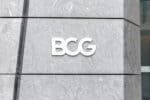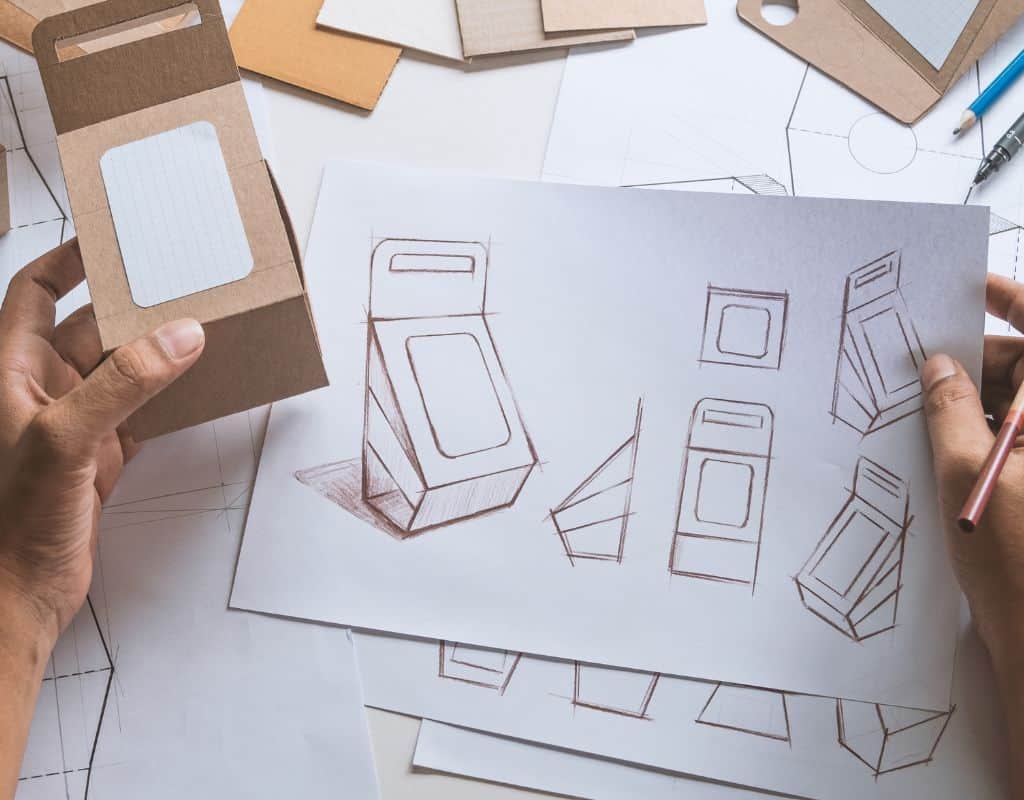What is a product designer? It’s someone who designs products, of course. But product designers don’t come up with an idea for a product, sketch it out, then start producing it. Product designers have to consider if their idea is viable and even worth producing.
Then, they have to figure out how to create a well-functioning product that users enjoy using. And product designers generally don’t work alone. They collaborate with other team members and balance stakeholder needs, from the CEO to the end-user.
So, what does all of this look like? This guide breaks it all down!
Product Designer Definition
A product designer designs just about anything that’s a product — food packaging, stuffed animals, spreadsheet programs, — you name it! That said, “product designer” can be an umbrella term encompassing several things.
For example, an industrial product designer designs physical products (like equipment parts) while other product designers work on SaaS products (like a customer management system). There are three key types of product design:
- System design. This focuses on designing systems, like a store. The designer determines what products should be grouped where, how they should be shelved, and so on.
- Process design. Process design is commonly used in e-commerce. The flow a potential buyer uses to purchase a product (find the item, read the description, select the size or color, place it in the cart, etc.) can impact whether or not the store is successful.
- Interface design. This is all about how the end-user interacts with the product. This kind of UX design ensures the product is easy to use.
Is a Product Designer the Same as a UX/UI Designer?
While product design encompasses interface design, a product designer is not the same as a UX/UI designer.
A product designer is responsible for overseeing and designing the entire product. A UX/UI designer focuses only on the user experience or user interface.
As an example, a product designer considers how an online project management tool functions in its entirety. Are the different fields capturing the right information and asking the right questions? Does it make sense to use a check box or free text field? The UX/UI designer focuses on how those input fields function to ensure a smooth experience when using the different fields.
Learn more about the differences: Product Designer vs. UX Designer: What’s the Difference?
How Much Does a Product Designer Make?
The Bureau of Labor Statistics (BLS) doesn’t have a single category for product designers. Instead, there are categories for industrial designers and for web developers and digital designers.

Product Design
Step into the shoes of a product designer in this free course from Accenture and New York Jobs CEO Council. Gain practical experience adding a new feature to an existing product.
Avg. Time: 4 hours
Skills you’ll build: Product thinking, UX design, UI design, Figma, product design, critical thinking.
According to the BLS, the job outlook for both categories is positive. While industrial designer jobs are predicted to see 2% growth between 2022 and 2032, jobs for web developers and digital designers have a projected 16% growth during the same time period.
The BLS also notes that the median pay for both categories is similar, with industrial designers making just under $76,000 per year and web developers and digital designers making just over $80,000 per year.
Glassdoor has product designer salary estimates for various experience levels across all industries:
| Years of Experience | Estimated Total Pay |
|---|---|
| 0-1 | $54,000 – $86,000 |
| 1-3 | $58,000 – $92,000 |
| 4-6 | $65,000 – $101,000 |
| 7-9 | $70,000 – $110,000 |
| 10-14 | $78,000 – $127,000 |
| 15 or more | $91,000 – $148,000 |
What Does a Product Designer Do?
Though product designers may work in a specific niche or sector, their work is similar: create a fantastic product that meets user needs without sacrificing business goals.
Jon Akland, associate director of product design at DockYard, explains what a digital product designer does:
“A product designer is the architect of a digital product experience. We are responsible for understanding product requirements and constraints, conceptualizing a solution, and delivering a set of design instructions that will produce a functional piece of software.”
Applying this explanation to all product designers, you could say that product designers are tasked with creating a product that meets the user’s needs without sacrificing the function and design of the product while accomplishing the business’s goals.
And how do product designers do that?
Product designers spend a fair amount of time collaborating with other teams. They may speak with the customer service reps to see what kind of feedback (positive and negative) they’re encountering. Product designers may also talk to the software developers to see what is and isn’t possible or work with the CEO to better understand how this product supports the business’s short- and long-term goals.

Strategic & Experience Design
Experience what it's like to work on a product design team in this free course from BCG. Learn how to research, understand, and advocate for the end-user.
Avg. Time: 5-6 hours
Skills you’ll build: Design management, design framework, ethnographic research, visual design, concept creation, personas
Then, they have to find a way to balance all of that information with user needs. “The most common consideration is meeting user needs and expectations while serving the goals of the business making the product,” explains Akland. “We spend a lot of time thinking about the visual and functional conventions that users interact with in their daily lives. What patterns do they see often, and which elements of those can we employ to help users understand and use our product quickly and easily. Users deserve products they can operate successfully and enjoy.”
What Industries Do Product Designers Work In?
Product designers can work in any industry that has a product. That can include sectors such as healthcare, ecommerce, and interior design.
The BLS reports that in 2022, industrial designers held about 32,000 jobs across these industries:
- Manufacturing: 34%
- Wholesale trade: 15%
- Specialized design services: 9%
- Architectural, engineering, and related services: 9%
- Self-employed: 5%
Web designers held approximately 117,900 jobs in 2022 across these sectors:
- Computer systems designs and related services: 17%
- Self-employed: 13%
- Retail: 7%
- Finance and insurance 5%
- Advertising, PR, and related services: 4%
What Kinds of Jobs Can a Product Designer Have?
Since many industries produce products, product designer jobs are almost everywhere. Though product designers commonly work at SaaS companies, other jobs and industries product designers work in are:
- Exhibition designers create the fixtures, features, and other elements displayed at conferences, trade shows, and sometimes museums.
- Furniture designers design furniture for homes, schools, and businesses.
- Automotive designers dream up the cars of tomorrow. (Check out our Guide to Ford Internships!)
- Production designers plan and build the sets that appear in movies, theater, and television productions.
How to Become a Product Designer
While some product designers have a bachelor’s degree in art, graphic design, or product design, that’s not necessarily a requirement. Other product designers have a background in psychology, history, or even law.
It’s also helpful to have some background in UX, UI, or other user-centric focus (like working in customer service). Again, this isn’t necessary but can be very helpful to your career.
Outside of experience and skills, having an online portfolio that showcases your product design work is useful.
What Skills Does a Product Designer Need?
In many ways, a product designer is an end-to-end role. You might be responsible for not only designing the product but also project managing the production of said product. Though rare, you may even write the technical manual or other collateral that goes out with the product!
With that in mind, product designers need a wide variety of skills to be successful. Akland suggests that aspiring product designers build and maintain skills in two specific areas: problem-solving and technical acumen.
“We need to be able to problem-solve and think around corners a bit in the product part of the work,” he explains. “Where research, conceptual development, and user-oriented discovery is done, we need to be at least conversant in what it takes to actually build a piece of software.”
In the case of a product designer for software, Akland also suggests that product designers “be practiced at interface design, because all the design decisions and product considerations are articulated and expressed through the user interface.”
>>MORE: UX vs. UI: What’s the Difference?
Other skills that will serve a product designer are:
- Collaboration: to help you work with other teams
- Project management: to ensure the product is being developed on time
- Creative thinking: when you encounter unforeseen obstacles during the design process, you’ll have to figure a way around them
- UX or UI experience: to better understand how your end-users will engage with the product
- Communication skills: you’ll use your written and verbal communication skills frequently to work on the product
- Technical skills: many product designers use specialized tools like Figma or Adobe to wireframe and create mock-ups of the product
Product Designers: The Bottom Line
So, what is a product designer? Whether it’s a physical product or a virtual one, product designers come up with an idea, work with other teams to bring that to life, and balance the needs of the business with the end user.
Want to explore this or other careers? Join a Forage virtual job simulation today. It’s free and lets you test-drive as many careers as you want!
Image Credit: Canva
